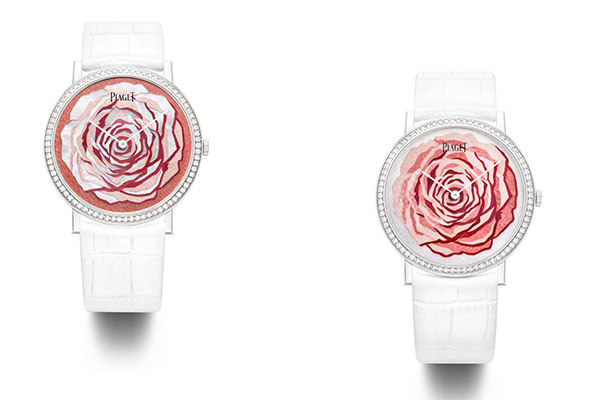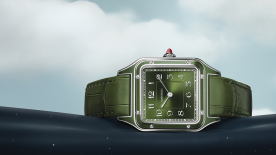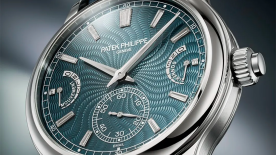For the fifth year running Piaget is joining forces with exceptional artisans to offer a series of timepieces with spectacular dials, celebrating the beauty of Yves Piaget’s rose.
Rose Saneuil, a marquetry artist, has lent her technical virtuosity to the creation of a highly elaborate rose for two Piaget Altiplano watches, producing two separate versions: one in wood marquetry and the other in wood and mother-of-pearl. Rose Saneuil first ventured into miniature marquetry in 2013. She specialises in mixed materials, a skill that very few artisans master, still less on a canvas as small as a watch dial. WorldTempus had the opportunity to meet her at the SIHH.
Can you explain the different stages of production?
Miniature marquetry always begins with a sketch. Then comes the selection of the materials, which have to correspond as closely as possible to the colours of the drawing. For the Altiplano I used white mother-of-pearl, and sheets of pale pink bird’s eye maple and pink sycamore cut into 0.6 mm veneers. Each rose motif, each dial, is made up of a total of 96 elements. Then I prepare little parcels, called sandwiches. Each element is sandwiched between two sheets of ordinary wood, which helps to stabilise the veneers and ensures they remain as flat as possible. Once I have all the pieces it’s like a jigsaw puzzle; I just have to recreate the design using the cut-out veneers. This technique is called “element by element”. Once the 96 pieces are set into the dial the piece is strengthened. Then comes the finishing: sanding and varnishing. The finished design is then attached to the metal base of the dial.

Do you follow a particular order when placing the elements?
It depends on the design, but for the Piaget Rose there is a particular order that has to be followed. Each element is placed one at a time, from the outside to the inside of the design. It’s not at all easy, the tolerances are so small.
How many hours’ work does each piece represent?
From the time I met the Piaget team to the point at which I’d completed the prototype it took almost one year. Once the design and the materials had been chosen, each dial took 25 hours’ work. That’s a long time!
Did you have any problems creating the dials?
Miniature marquetry is the most complex form of marquetry. You can’t allow even the smallest gap. The difficulty is that each element, each piece, is minuscule. It takes discipline, perseverance, even self-sacrifice.

Where did you get your passion for marquetry?
For as long as I can remember I have always been drawn to arts and crafts. And at the same time I’m very rational, I admire logic. Marquetry is about creativity, but it’s also about precision. It’s the combination of the two that I find so fulfilling.
Are there any limitations to miniature marquetry?
I started producing miniature marquetry just two years ago. Before that I had never produced any dials. So I did come up against some limitations in terms of materials. Mother-of-pearl, for example, is very brittle to work with. But I learned to get around the constraints. I always manage to work it out, to find a solution. That’s the challenge! I learn something new every day.
Where do you find inspiration for your creations?
Nature is a great source of inspiration. Every day, as I walk around, I take lots of photos and use them afterwards in my designs. Sometimes I’m inspired by just a line or a curve, and other times I may take several elements. After that, the really fascinating part is bringing in other colours and materials, and making my designs concrete.
Click on the photo at the top of this article to see a slideshow of Rose Saneuil's know-how.






